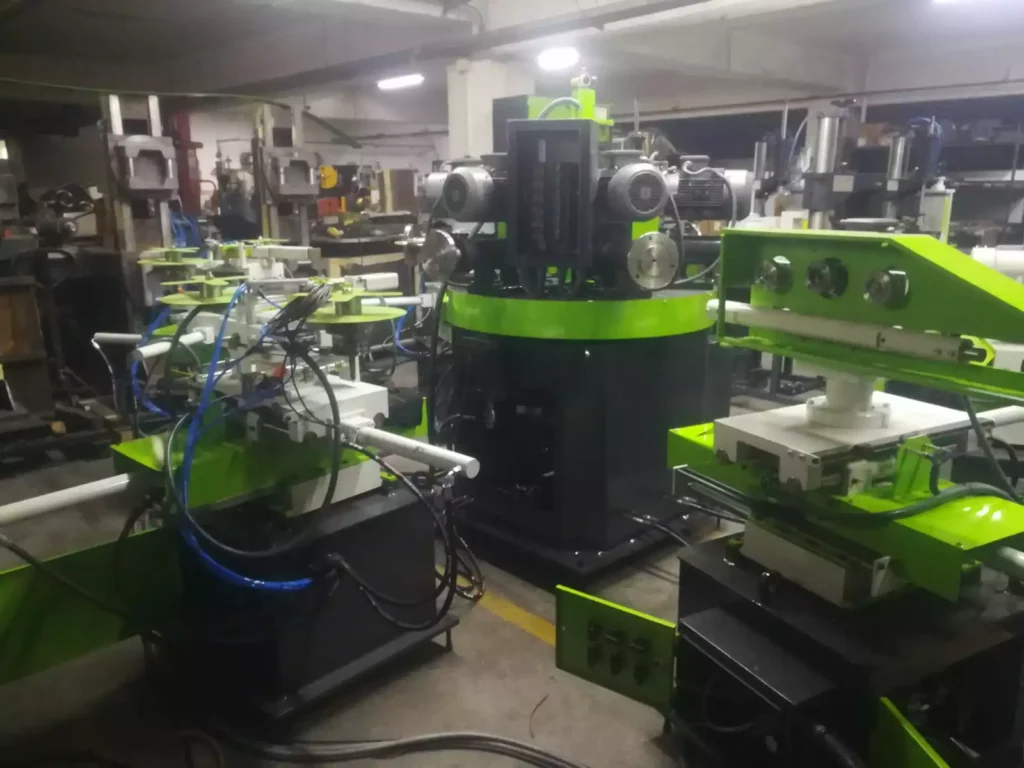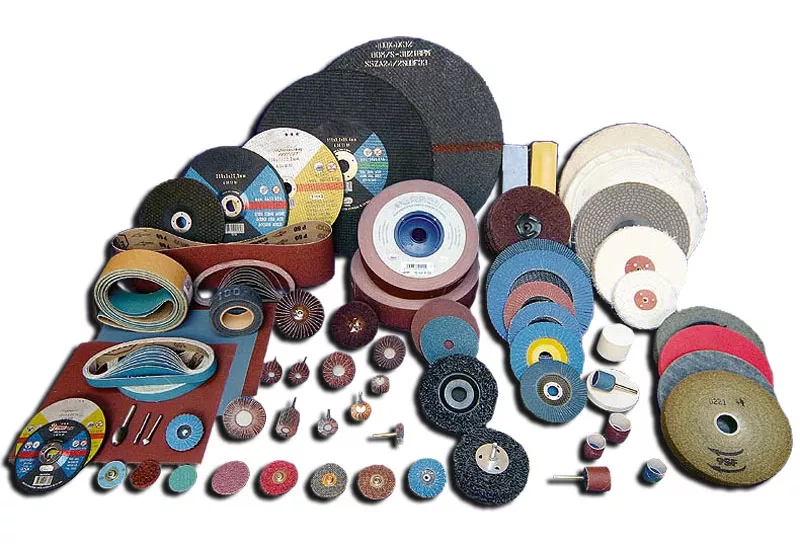
A surface polisher for trim parts is a specialized polishing tool designed to achieve high-quality surface finishes on trim components used in automotive, aerospace, furniture, and other industries. Trim parts typically include decorative or functional elements such as moldings, bezels, grilles, and accents, which require smooth and glossy surfaces to enhance the overall appearance of the final product. A surface polisher for trim parts is specifically engineered to address the unique challenges associated with polishing these components, such as complex shapes, delicate features, and varying materials. Here are some key features and considerations:
1. Precision Control: A surface polisher for trim parts should offer precise control over polishing parameters such as speed, pressure, and contact angle. This ensures uniform polishing results across the entire surface of the trim part, even in areas with intricate details or tight tolerances.
2. Versatile Tooling: The polisher should be equipped with interchangeable polishing pads or discs designed to accommodate different trim part geometries, sizes, and materials. This versatility allows for efficient polishing of a wide range of trim components without the need for specialized equipment.
3. Adjustable Speed and Pressure: Variable speed and pressure settings are essential for tailoring the polishing process to the specific requirements of each trim part. The ability to adjust the speed and pressure ensures optimal material removal, surface refinement, and polishing efficiency while minimizing the risk of surface damage or over-polishing.
4. Ergonomic Design: An ergonomic design with comfortable grips, balanced weight distribution, and intuitive controls improves operator comfort and productivity during extended polishing tasks. This design consideration reduces operator fatigue and enhances overall polishing precision and consistency.
5. Dust Extraction System: A built-in dust extraction system or attachment helps to capture and remove polishing debris, dust, and abrasive particles generated during the polishing process. This not only maintains a clean and safe working environment but also prevents contamination and surface defects on the trim parts.
6. Compatibility with Polishing Compounds: The surface polisher should be compatible with a variety of polishing compounds or abrasives suitable for different trim part materials and surface finishes. This compatibility allows operators to achieve desired polishing results, from matte to high-gloss finishes, with the appropriate polishing media.
7. Quality Assurance Features: Quality assurance features such as digital readouts, inspection lights, and automated feedback systems enhance polishing accuracy and consistency. These features enable operators to monitor polishing parameters in real-time, identify potential defects or inconsistencies, and make adjustments as needed to maintain quality standards.
8. Safety Features: Safety features such as overload protection, thermal sensors, and emergency stop buttons are essential for ensuring operator safety and preventing accidents during the polishing process. These safety mechanisms help to mitigate risks associated with equipment malfunctions, excessive heat buildup, or operator errors.
By investing in a high-quality surface polisher specifically designed for trim parts, manufacturers can achieve superior surface finishes, enhance product aesthetics, and meet the stringent quality standards demanded by today’s competitive markets. With precision control, versatile tooling options, ergonomic design, and advanced safety features, a surface polisher for trim parts becomes an indispensable tool for achieving consistent and flawless surface finishes on a wide range of trim components.
Polishing of Metal Surfaces
Polishing of metal surfaces is a surface finishing process aimed at improving the appearance, smoothness, and reflectivity of metal workpieces. It involves the removal of surface imperfections, scratches, oxidation, and other defects to achieve a desired level of surface quality. Metal polishing is widely used in various industries, including automotive, aerospace, jewelry, and manufacturing, to enhance the aesthetic appeal, corrosion resistance, and functionality of metal components. Here’s a comprehensive guide to polishing metal surfaces:
1. Surface Preparation:
- Before polishing, it’s essential to prepare the metal surface by cleaning it thoroughly to remove any dirt, grease, or contaminants. This can be done using solvents, degreasers, or alkaline cleaners.
- For heavily oxidized or tarnished surfaces, mechanical methods such as sanding or abrasive blasting may be employed to remove the outer layer of oxidation and reveal the underlying metal.
2. Selection of Polishing Equipment and Abrasives:
- The choice of polishing equipment and abrasives depends on factors such as the type of metal, surface condition, desired finish, and size of the workpiece.
- Common polishing equipment includes handheld rotary polishers, buffing machines, and polishing lathes. These machines may be equipped with polishing wheels, discs, or brushes made of various materials such as cloth, felt, sisal, or nylon.
- Abrasives used in metal polishing include abrasive compounds, polishing pastes, abrasive powders, and polishing discs or pads. The selection of abrasives depends on the hardness of the metal and the level of surface imperfections to be removed.
3. Polishing Techniques:
- Polishing can be performed using various techniques, including manual polishing, mechanical polishing, and chemical polishing.
- Manual polishing involves hand-held tools such as polishing cloths, pads, or abrasive compounds applied directly to the metal surface. This method is suitable for small or intricate parts and allows for precise control over the polishing process.
- Mechanical polishing utilizes powered polishing equipment such as rotary polishers, buffing machines, or polishing lathes to achieve faster and more consistent results. This method is suitable for larger workpieces or high-volume production environments.
- Chemical polishing involves the use of chemical solutions or pastes to chemically react with the metal surface, removing surface imperfections and enhancing surface brightness. This method is often used for delicate or complex-shaped parts that are difficult to polish mechanically.
4. Polishing Process:
- The polishing process typically involves multiple stages, starting with coarse abrasives to remove surface imperfections and gradually progressing to finer abrasives to achieve a smooth, reflective finish.
- Each polishing stage may require different polishing speeds, pressures, and abrasive materials to achieve optimal results.
- Polishing is often followed by buffing or burnishing to further enhance the surface gloss and remove any remaining scratches or haze.
5. Surface Inspection and Quality Control:
- After polishing, the metal surface should be thoroughly inspected to ensure that the desired finish has been achieved.
- Surface inspection may involve visual examination under proper lighting conditions, microscopic inspection, or surface roughness measurements using profilometers or surface roughness testers.
- Quality control measures should be implemented throughout the polishing process to monitor process parameters, identify defects or inconsistencies, and make adjustments as needed to maintain quality standards.
6. Surface Protection and Preservation:
- Once polished, metal surfaces should be protected to maintain their appearance and prevent corrosion or tarnishing.
- Surface protection methods may include applying protective coatings such as clear lacquers, waxes, or corrosion inhibitors, depending on the specific requirements of the application and the type of metal being polished.
- Proper storage and handling practices should be followed to prevent surface damage or contamination after polishing.
In summary, polishing of metal surfaces is a multi-stage process that involves surface preparation, selection of polishing equipment and abrasives, polishing techniques, quality control, and surface protection. By employing the appropriate polishing methods and techniques, manufacturers can achieve high-quality surface finishes, enhance product aesthetics, and improve the performance and longevity of metal components in various applications.
Polishing Types

Each of these processes plays a crucial role in achieving desired surface finishes and functional properties for metal components. Let’s break down each process:
1. Felt Polishing: Felt polishing involves using a polishing wheel made of felt material impregnated with polishing compounds or abrasives to achieve a smooth and glossy finish on metal surfaces. The felt wheel, typically mounted on a rotary polishing machine, applies pressure and friction to the workpiece, removing surface imperfections and enhancing surface brightness.
2. Brushing: Brushing is a surface finishing technique that utilizes abrasive brushes or abrasive-embedded brushes to remove surface imperfections, burrs, and oxides from metal surfaces. The brushing process can produce various surface textures, from matte to brushed finishes, depending on the type of brushes and brushing parameters used.
3. Brightening: Brightening is a polishing process aimed at enhancing the surface brightness, reflectivity, and aesthetic appearance of metal surfaces. It involves using fine abrasives, polishing compounds, or chemical solutions to remove fine scratches, haze, or oxidation layers, resulting in a smooth and lustrous finish.
4. Smoothing: Smoothing is a surface refinement process that focuses on removing roughness, irregularities, and machining marks from metal surfaces to achieve a uniform and smooth texture. It can be accomplished through mechanical methods such as grinding, sanding, or lapping, followed by polishing or buffing to further refine the surface.
5. Satin-finishing: Satin finishing is a surface treatment technique that produces a soft, semi-matte finish characterized by a fine and uniform texture with low reflectivity. It is achieved by brushing or sanding the metal surface with abrasive pads or belts in a controlled manner to create a consistent satin-like appearance.
6. Polishing: Polishing is a broad term encompassing various surface finishing techniques aimed at improving the smoothness, glossiness, and reflectivity of metal surfaces. It involves using abrasive compounds, polishing wheels, or buffing pads to remove surface imperfections and produce a shiny, mirror-like finish.
7. Milling: Milling is a machining process that involves removing material from a workpiece using rotating cutting tools to create precise shapes, contours, and features. While milling primarily focuses on shaping and dimensional accuracy, it can also produce surface finishes ranging from rough to semi-finished depending on the milling parameters and tooling.
8. Emery Polishing: Emery polishing utilizes emery cloth or emery paper, which is coated with abrasive particles such as aluminum oxide or silicon carbide, to remove surface imperfections and refine metal surfaces. Emery polishing is often used for initial stock removal or leveling before finer polishing stages.
9. Deburring: Deburring is the process of removing burrs, sharp edges, and protrusions from metal workpieces to improve safety, functionality, and aesthetics. It can be achieved through various methods such as manual deburring, mechanical deburring using deburring tools or brushes, or automated deburring using specialized equipment.
Each of these surface finishing processes plays a critical role in achieving specific surface characteristics, such as smoothness, texture, glossiness, and functionality, depending on the requirements of the application and the desired end result for the metal component. Integrating these processes effectively into manufacturing workflows ensures the production of high-quality metal parts with the desired surface finishes and properties.
EMS Metalworking Machinery
We design, manufacture and assembly metalworking machinery such as:
- Hydraulic transfer press
- Glass mosaic press
- Hydraulic deep drawing press
- Casting press
- Hydraulic cold forming press
- Hydroforming press
- Composite press
- Silicone rubber moulding press
- Brake pad press
- Melamine press
- SMC & BMC Press
- Labrotaroy press
- Edge cutting trimming machine
- Edge curling machine
- Trimming beading machine
- Trimming joggling machine
- Cookware production line
- Pipe bending machine
- Profile bending machine
- Bandsaw for metal
- Cylindrical welding machine
- Horizontal pres and cookware
- Kitchenware, hotelware
- Bakeware and cuttlery production machinery
as a complete line as well as an individual machine such as:
- Edge cutting trimming beading machines
- Polishing and grinding machines for pot and pans
- Hydraulic drawing presses
- Circle blanking machines
- Riveting machine
- Hole punching machines
- Press feeding machine
You can check our machinery at work at: EMS Metalworking Machinery – YouTube
Applications:
- Beading and ribbing
- Flanging
- Trimming
- Curling
- Lock-seaming
- Ribbing
- Flange-punching
